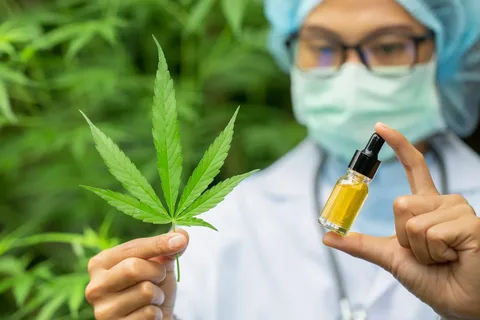Do you ever wonder if CBD oil usage has any scientific backing or evidence? You are likely now familiar with the many CBD-based products widely used in the US and many parts of the world for their benefits, both medical and pleasure.
The use of CBD (cannabidiol) began many years back. According to Leas et al. (2020), it was mainly used to treat health conditions, and people loved the results. It has a variety of names like weed, pot, Mary Jane, and reef. It was anciently used for its benefits in Greece, China, India, the Netherlands, and Egypt. CBD is a compound of cannabis that occurs naturally and is most abundant after Tetrahyrocannabidiol (THC). THC is an active compound of Cannabis that causes a high feeling. The use of CBD has gained popularity over the years. Many embrace it, especially for its medicinal use, like helping sleep, relieving pain, easing the effects of epilepsy and asthma-related problems, easing stress, and increasing appetite. However, despite the wide range of use of CBD, there are still doubts and debates that arise on its medical use. Is there any science behind CBD Oil? This article will try to answer that question.
What Science Says About CBD Oil
People worldwide are embracing the use of CBD for medicinal benefits. CBD oil is found almost in every store in the USA and over the counter. However, the Food and Drug Administration, an Agent in the US, sets standards for manufactured products on their quality and safety for human health. Research has been ongoing on CBD Oil for health benefits, and some have proven to help with some related problems outlined below.
Epilepsy Syndrome
Gray & Whalley (2020) found that CBD helps treat seizures caused by epilepsy, and it has been used for a long time. With the approval of (the FDA) in 2018, under the name, Epidiolex, the use of CBD was approved. According to Sekar et al. (2019), Epidiolex treats two types of epilepsy during childhood up to 2 years of age: Lennox- Gastaut Syndrome and Dravet Syndrome. The treatment against epilepsy is recommended in children and young people up to the age of 25 years to help reduce the frequency of seizures and improve life generally. Patients who undergo CBD treatment for epilepsy seizures should undergo a re-examination after 12 weeks. Many people turn to CBD for relief from seizures initially termed untreatable.
Relieve Pain
Thapa et al. (2018) confirmed that CBD had been proven to help reduce pains, especially those related to chronic diseases. In 2005 in Canada, the use of Sativex and oromucosol was approved. It is a spray containing equal amounts of CBD and THC to treat multiple-sclerosis neuropathic pain. Two years later, Canada approved using Sativex to relieve cancer pain that could not be relieved with other medications. Topical CBD is most preferred in relieving pain. The systematic tissue is not affected when CBD oil is used topically compared to when it is introduced directly into the bloodstream. Topical CBD has more noticeable effects because it is more direct and reduces pain in a particular area.
Reduce Diabetic Complications
CBD Oil helps to lower the outcome of high levels of glucose found in cells that lead to the occurrence of diabetes and other health complications. Weiss et al. (2006) stated that CBD is used on diabetes patients who are not on insulin to reduce insulin resistance and increase the glucose-dependent Insulinotropic Peptide. This is a hormone that makes certain insulin released from digested food. This makes CBD a natural remedy for diabetes as it helps the body regulate insulin-related levels of the hormone.
Hinder Arthritis Symptoms
Arthritis is a disease that causes the deterioration of tissues found in and around the joints leading to stiffening of the joints that causes loss of motion and painful inflammation. There are different types of arthritis, and treatment focuses on reducing pain and improving the functioning of the joints. Sativex, a CBD-based botanical drug, was, in 2006, found to help improve the quality of sleep and reduce pain at rest and during motion in patients with rheumatoid arthritis. Considering Philpott et al. (2017), the effects of CBD on relieving pain were found beneficial.
Reduce ALS Symptoms
Meyer et al. (2019) confirmed these claims. Amyotrophic Lateral Sclerosis (ALS) refers to a disease that makes the nerve cells in the spinal cord and brain deteriorate, leading to deprivation of muscle control which gets worse over time. With the help of research, the entourage effect can help people with ALS. The entourage effect is the working together of CBD and THC to supplement each other’s potency and relief benefits. Patients who used CBD to reduce symptoms of ALS described it to give them higher and more effective results.
Conclusion
There are many scientific results and shreds of evidence on the beneficial use of CBD. From chronic and less chronic diseases, patients have benefited from CBD oil, especially to reduce pain and alleviate symptoms of their respective illnesses. Some of these illnesses have failed to respond to the treatment accorded with the use of medical treatment, but CBD has been used, and for a fact, it has proven to be of help and assistance. Scientists who develop drugs have begun incorporating CBD oil in most medical drugs to help in pain relief in some illnesses. You can try it too if you haven’t, and if there is a disease that troubles you with so much pain.
References
Gray, R. A., & Whalley, B. J. (2020). The Proposed Mechanisms Of Action Of CBD In Epilepsy. Epileptic Disorders, 22, S10-S15. Leas, E. C., Hendrickson, E. M., Nobles, A. L., Todd, R., Smith, D. M., Dredze,
Meyer Et. Al (2019). Real-World Experience Of Patients With Amyotrophic Lateral Sclerosis (ALS) In The Treatment Of Spasticity Using Tetrahydrocannabinol: Cannabidiol (THC: CBD). BMC Neurology, 19(1), 1-13.
Philpott, H. T., O’Brien, M., & Mcdougall, J. J. (2017). Attenuation Of Early Phase Inflammation By Cannabidiol Prevents Pain And Nerve Damage In Rat Osteoarthritis. Pain, 158(12), 2442.
Sekar Et. Al (2019). Epidiolex As An Adjunct Therapy For Treatment Of Refractory Epilepsy: A Comprehensive Review With A Focus On Adverse Effects. F1000Research, 8.
Thapa, D., Cairns, E. A., Szczesniak, A. M., Toguri, J. T., Caldwell, M. D., & Kelly, M. E. (2018). The Cannabinoids Δ8THC, CBD, And HU-308 Act Via Distinct Receptors To Reduce Corneal Pain And Inflammation. Cannabis And Cannabinoid Research, 3(1), 11-20.
Weiss, L., Zeira, M., Reich, S., Har-Noy, M., Mechoulam, R., Slavin, S., & Gallily, R. (2006). Cannabidiol Lowers Incidence Of Diabetes In Non-Obese Diabetic Mice. Autoimmunity, 39(2), 143-151.
I presently work as a GP in London. Using the acquired academic and professional experience, I advise patients with various complaints about mental health – depressed mood, nervousness, lack of energy and interest, sleep disorders, panic attacks, obsessive thoughts and anxieties, difficulty concentrating, and stress. In my free time, I love to paint and go on long walks on the beach. One of my latest obsessions is sudoku – a wonderful activity to calm an unease mind.
[email protected]
- CBD Oil Tincture By JustCBD UK-Flavorful Explorations: Navigating JustCBD’s UK CBD Oil Tincture Odyssey - October 14, 2023
- Vape Kit By Vapesourcing-The Ultimate Vape Kit Comprehensive Review and Analysis - October 12, 2023
- Best CBD Oil Products - February 4, 2023








